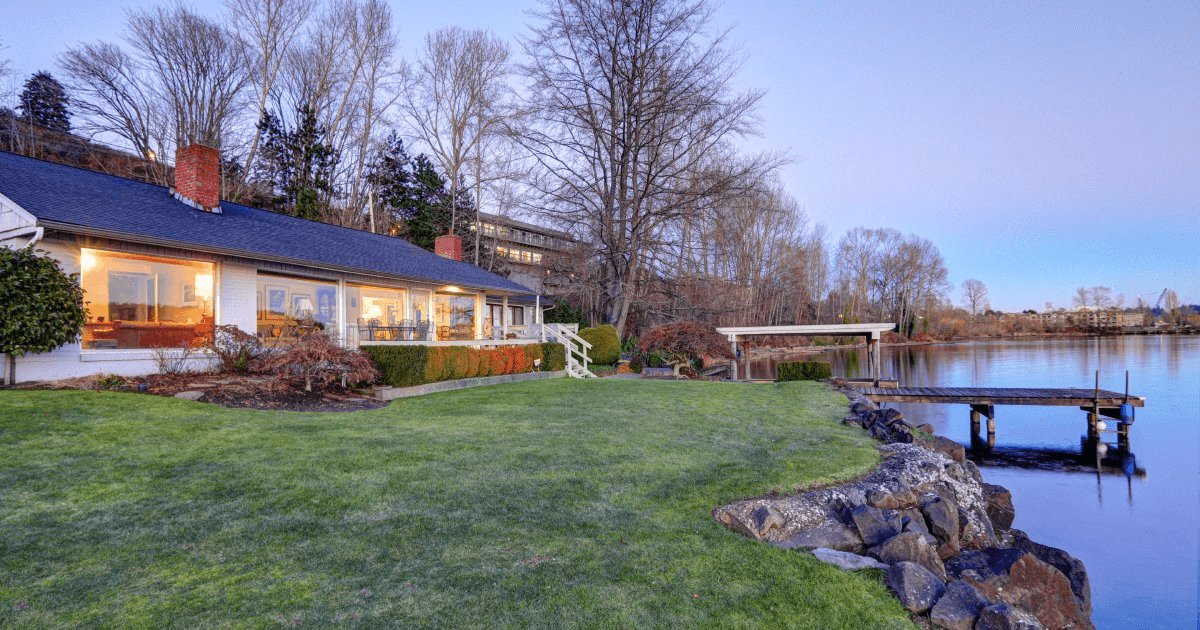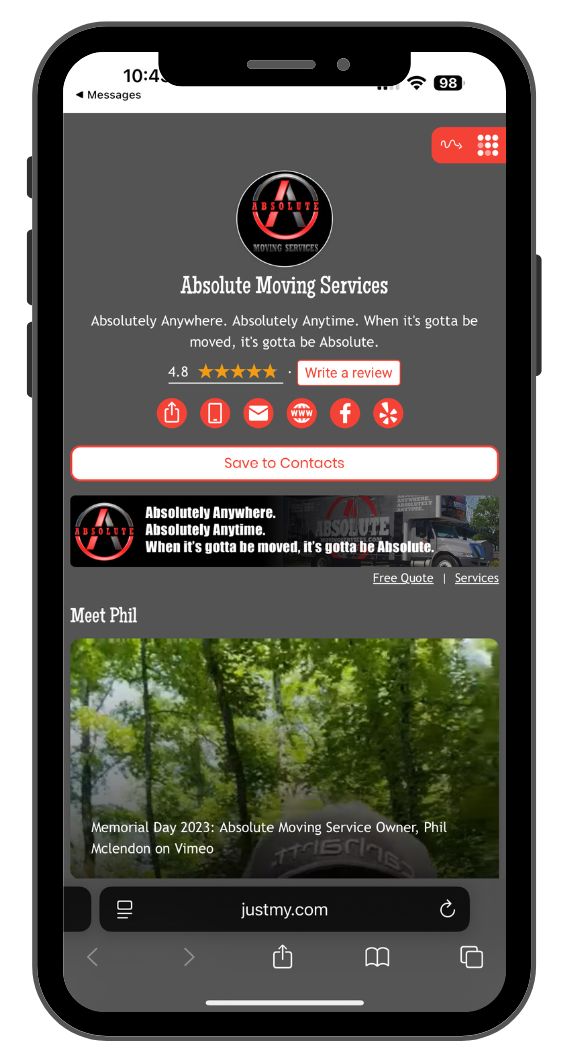

Lakeside living offers serenity, scenic views, and instant access to the water. It also brings a unique set of challenges that evolve with the seasons. Homes near water are exposed to constant moisture, which can lead to algae buildup, wood rot, and shifting ground conditions. Add in elevated water tables and curious wildlife looking for shelter, and you’ve got a maintenance schedule that looks very different from one for an inland home.
Here are some seasonal care tips for lakeside property owners that will help you protect your home and shoreline all year long.
Before fall storms gain strength, inspect your dock system thoroughly. Check that anchor points are still solid, that cleats remain tight, and that the dock itself hasn’t started to shift or lift to one side. These issues tend to worsen in colder months, particularly when winds increase and ice begins to form.
If repairs are needed, consider the material. Treated lumber is a familiar go-to, but composite decking and marine-grade aluminum are also strong contenders. The material you choose is contingent on your budget and how often you use your dock.
Depending on your priorities, there are boat dock material options for every budget that can extend the life of your waterfront setup without overcommitting to long-term costs.
As lakes begin to freeze, the pressure from expanding and shifting ice can cause serious structural damage. Ice heaving—where the frozen surface buckles and pushes against nearby structures—is a common issue in colder regions and should be anticipated before the first hard freeze.
To minimize potential damage, install bumpers or floating dock hardware by mid-October. Doing so allows the dock to flex and rise with the ice rather than resist it. And if your setup includes seawalls or boat lifts, incorporate a slight amount of flexibility. Rigid connections and over-tightened fasteners are more likely to break under pressure when the ice begins to move.
Autumn is the last reliable window to address shoreline wear before winter sets in. Walk around your property and note any areas where the slope has begun to degrade. Also, note any exposed roots or areas where the soil is starting to pull away. Once the freeze–thaw cycle begins, these weak points will only become more unstable.
There are a few approaches to stabilizing your shoreline, though. Riprap—using angular rocks to break up wave energy—is widely used, but bioengineering methods, such as live staking or coir logs, can offer more natural reinforcement.
Replanting native vegetation also helps anchor soil and filter runoff. So, if your property experiences regular erosion, consider hiring a consultant every two to three years to monitor changes.
Waterfront properties often see an uptick in vegetation growth around the shoreline. While some growth is beneficial, an excess of aquatic plants can trap debris, encourage algae blooms, and reduce water clarity. It’s best to handle this cleanup before water temperatures fall below 50 degrees Fahrenheit—usually by mid-October, depending on your region.
Use a rake or aquatic weed cutter to remove overgrowth from the water’s edge, being careful not to disturb rooted native plants that help stabilize the shoreline. Over-clearing can leave the soil exposed, increasing the risk of erosion. The goal is to strike a balance between accessibility and long-term shoreline health.
As fall winds down, any outdoor plumbing near the water needs to be shut down and cleared before the first hard freeze. Outdoor showers, dockside sinks, and fish cleaning stations are all at risk for burst pipes if water remains in the lines.
Don’t rely solely on gravity drainage. Employ compressed air to blow out water from the lines, especially those that dip below grade or run along exposed dock surfaces. If your water system draws directly from the lake, check the intake screen for debris and inspect the piping for hairline cracks that may have formed over the summer.
Runoff behaves differently on lakeside properties. Sloped land, saturated soils, and rising water tables can lead to pooling or foundation seepage if drainage is compromised. That risk increases after snow melts or when early spring rains hit frozen ground.
By mid-to-late October, take a close look at your property’s drainage layout. Swales, rain gardens, French drains, or gravel trenches should all be clear of blockages. You’ll also want to evaluate grading, particularly along the lake-facing side of your home, to make sure water flows away from the structure instead of settling around it.
Cold weather drives animals closer to homes, and the lakeside environment only increases the number of potential visitors. Mink, muskrats, raccoons, and rodents can all shelter under docks, in crawl spaces, or inside boathouse rafters if left unattended.
By early November, seal off any ground-level gaps using quarter-inch hardware cloth or steel mesh. Motion-activated lighting helps discourage nighttime entry, especially around storage sheds or under raised decks. And don’t forget to check less obvious areas, like paddleboard racks or ceiling beams inside your boathouse, where nests can go unnoticed.
Once winter breaks, resist the urge to dive right into full use. Freeze–thaw cycles and rising lake levels can subtly shift dock posts, loosen bolts, or misalign waterlines over the winter.
Start with a slow inspection in early April. Walk the dock to check for uneven boards, loose cleats, or tilted pilings. Examine anchoring systems and confirm that any floating structures are still level.
As a final step, test shoreline water quality with a simple kit before resuming recreational use.
Hopefully, these seasonal care tips for lakeside property owners will make spring and summer feel more like a reward, and less like a recovery mission. But here’s one final tip: stroll along your shoreline once a month between October and March.
Quick visual check-ins take just a few minutes but can help catch early signs of damage. Look for washed-up debris, new erosion spots, or signs of animal activity. Take note of any areas where the waterline seems higher or lower than expected.

Put your business in front of thousands of LOCALS! Create your free listing on the NewsSTAND and update your profile anytime to share the latest info, specials, and contact details.

Got a story to Share? Pitch your idea or write an article for the NewsSTAND! Join us in highlighting the positive and powerful moments that make our city shine.

We’re passionate about working together to amplify our City. Reach out to the NewsSTAND team to explore collaboration opportunities and make a difference in our community.
Hover over each card to unlock the full story and see what you’re about to get!







